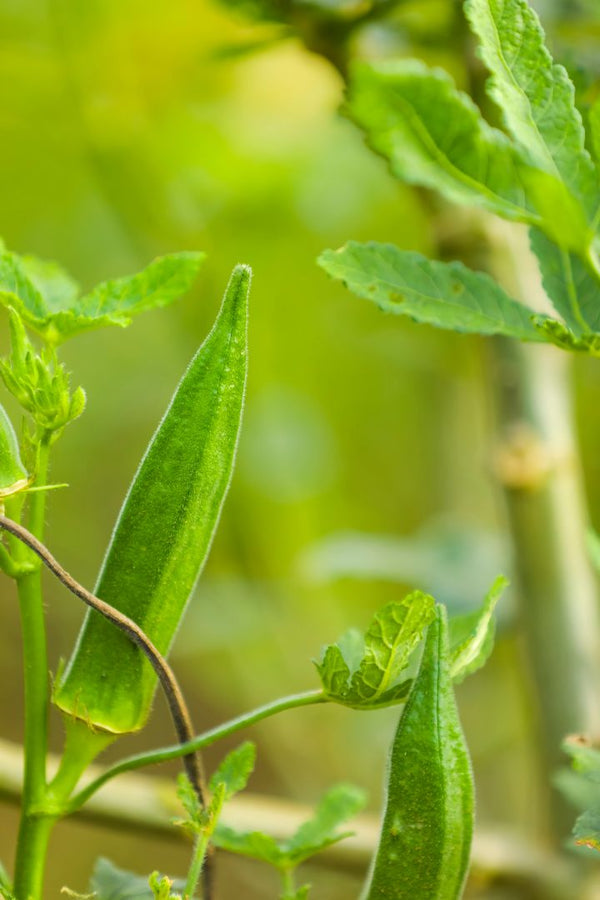
Carrot Growing Guide
Learn how to grow crisp, flavorful carrots from seed to harvest! This guide covers soil prep, planting, watering, and storage—plus variety tips for every soil type and garden size.
Okra is a great option for gardeners in warmer climates. They are surprisingly easy to grow and with just a few plants, can produce enough to feed your whole family. A major factor in starting your okra seeds is timing. If you are planning a Spring crop, okra seeds should be started indoors and transplanted. However, for a Summer and Fall okra harvest, you can easily direct seed because the soil temperature has had plenty of time to warm up. Certain varieties of okra, like our Green Fingers Okra, is very versatile in the it can be grown in containers or direct seeded into the ground. The best place to start on deciding which okra you want to grow is by looking at some of the different varieties and their characteristics.
Jambalaya Okra is a hybrid variety that is the most productive we’ve ever tried. Plants produce heavy yields of green pods that are great for pickling, frying, and stewing.
Productive plants produce pods that can reach 7-9″ in length, but are best harvested between 3-4″ long. Large plants will grow as large as 6′ in optimally-warm growing conditions.
Green Fingers Okra is a unique hybrid variety that produces small, flavorful 3-4″ green pods and is ideal for gardens of all sizes but has been specifically bred to be small enough for container gardening.
Star of David produces deeply ribbed pods that are shorter and thicker than the traditional okra varieties. Pods are best when picked around 3 to 4 inches long. Plants can get as large as 7 feet tall.
While other varieties may become tough when pods get long, this variety will maintain tenderness at 10″ long. Pods are at optimal tenderness when harvested about 6″ long.
This variety is a favorite in Louisiana where it can be found in a wide variety of Cajun dishes. Emerald Green Velvet produces long, ribbed pods that will tend to stay tender at longer lengths than other varieties.
Chinese Okra is an heirloom, multi-purpose variety that can be used as okra substitute when harvested young, or for making sponges and other household items if allowed to dry on the vine.
Jing Orange Okra is an Asian heirloom okra variety with beautiful red to orange pods that are spineless and stay tender at 6″ long. Great for frying or making stews.
Developed by Clemson University, this okra variety produces beautiful, deep red pods with green tips. Plants can grow as tall as 6′ and are very productive, providing bountiful harvests when picked regularly.
The biggest mistake we encounter from our customers is planting okra seeds too soon in the season.Okra seeds will not germinate if the soil is too cool. Be sure that your soil temperature has been consistently 70°F – 75°F and all danger of frost has passed before direct sowing or transplanting.
Because okra is such a heat loving plant, it makes an excellent crop for succession planting. Wait for the soil to warm in the Spring to transplant, then easily have another crop direct sown behind it to enjoy okra all the way into summer and fall until the first frost hits.
Okra seeds should be started indoors at least 6 weeks before the last frost date for your zone.We recommend using our 162 Seed Trays for best results. We have everything that you need to be successful starting okra seeds.
If you have leftover okra seeds, be sure and store them in an airtight container in the freezer. You will be able to plant those same seeds for up to 2 years if you store them the right way. Keeping your seeds from year to year will help keep costs down for your home garden.
We have been growing this Southern staple for many years in our gardens and we strive to find the best methods to pass on to our customers and be successful growing your own food. We have tested the theory that you should soak your okra seeds prior to planting and haven’t found any benefit to doing this. So save yourself some time and skip the soak!
Learn how to grow crisp, flavorful carrots from seed to harvest! This guide covers soil prep, planting, watering, and storage—plus variety tips for every soil type and garden size.
Learn to grow strawberry plants at home with Grow HOSS! Proper planting techniques, when to plant your strawberries, and more













